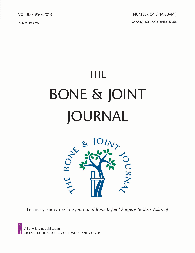
Arthroplasty
Total hip replacement vs. hip resurfacing for patients with degenerative hip joint disease
This report has been verified
by one or more authors of the
original publication.
Bone Joint J. 2013 Nov 1;95-B(11):1464-73
219 hips in 192 patients diagnosed with degenerative hip joint disease, were randomly assigned to treatment with either metal-on-metal hip resurfacing or total hip replacement. The purpose was to compare to two in terms of clinical benefits, metal ion levels, and radiographic outcomes over 8 years after treatment. The results of the study indicated that for young patients suffering from hip joint degeneration, both total hip replacement and hip resurfacing result in similar, improving clinical outcomes and revision rates approximately 8 years postoperatively. Osteolysis was observed more frequently with THR, while higher titanium levels were found in patients who received HR.
Unlock the full article
Get unlimited access to OrthoEvidence with a free trial
Start TrialCritical appraisals of the latest, high-impact randomized controlled trials and systematic reviews in orthopaedics
Access to OrthoEvidence podcast content, including collaborations with the Journal of Bone and Joint Surgery, interviews with internationally recognized surgeons, and roundtable discussions on orthopaedic news and topics
Subscription to The Pulse, a twice-weekly evidence-based newsletter designed to help you make better clinical decisions
Exclusive access to original content articles, including in-house systematic reviews, and articles on health research methods and hot orthopaedic topics
Or continue reading this full article
Register Now

Subscribe to "The Pulse"
Evidence-Based Orthopaedics direct to your inbox.





































